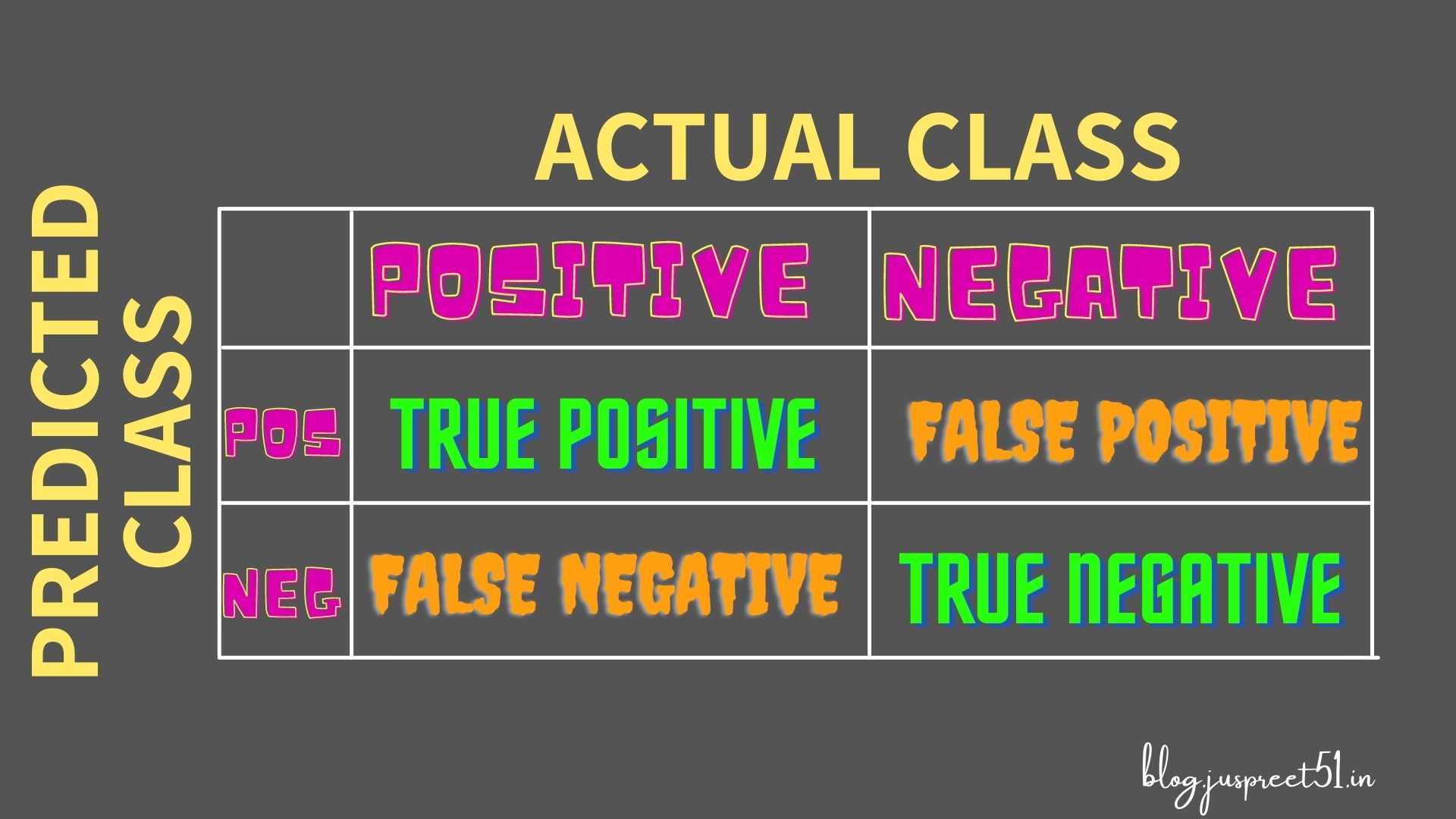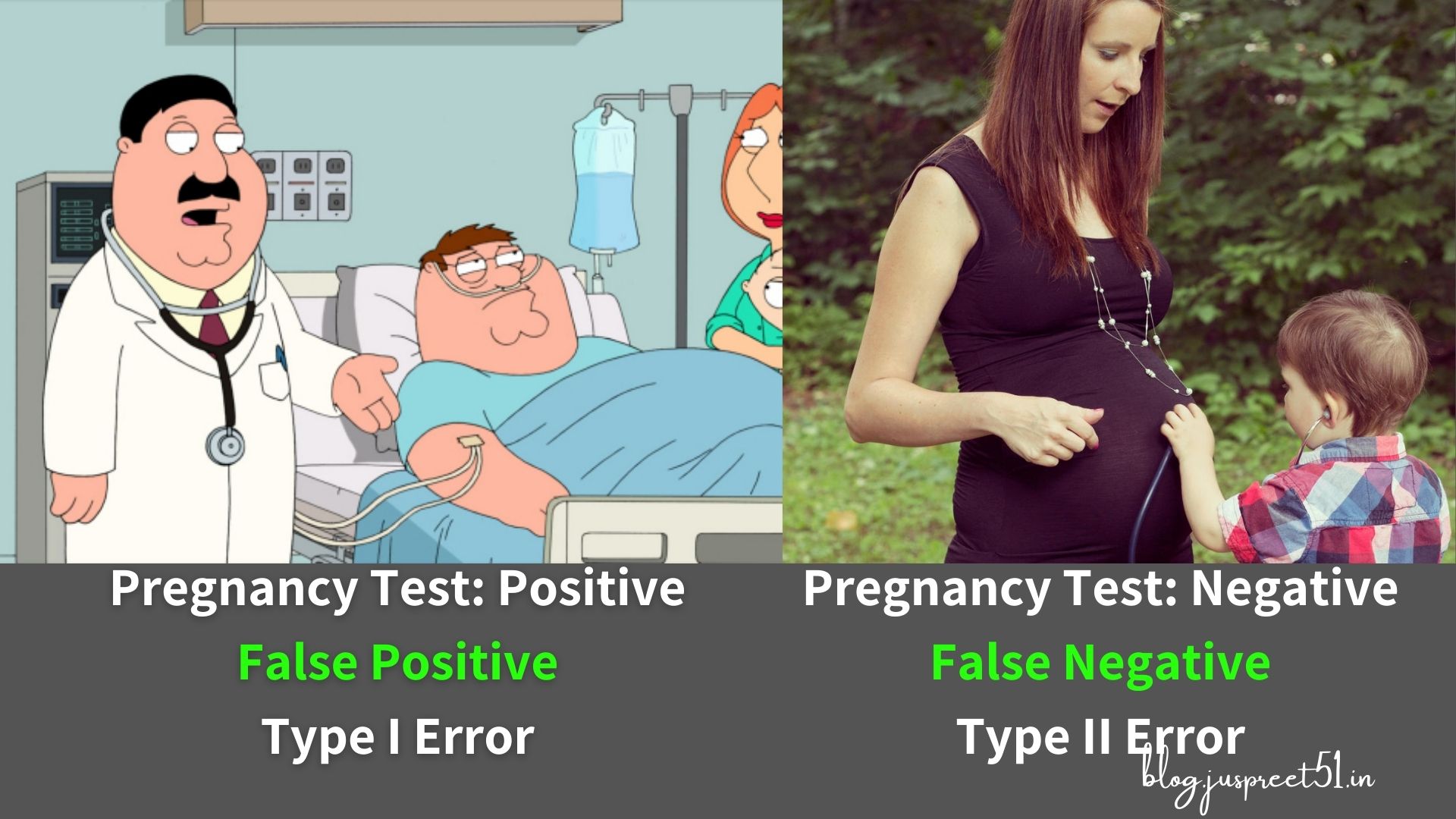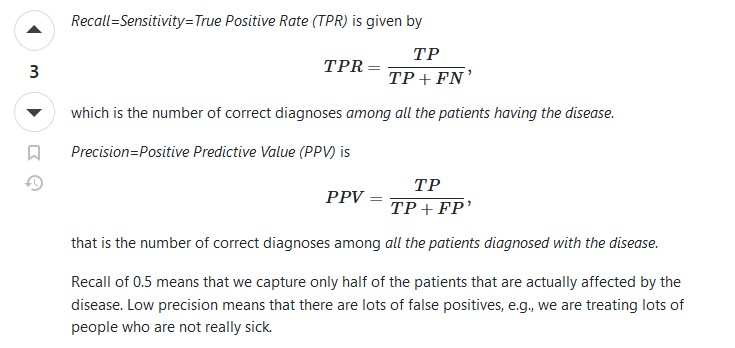Chapters
Classification
Classification: Evaluation Metrics
Chapters
Table of Contents
Basics
Confusion Matrix:
Type-I & Type-II Errors:

Evaluation Metrics
Precision & Recall:
Explanation 1:

Precision is about out of all the diagnosed, what proportion of patients are actually
sick
And, Recall is about out of all the patients that are actually sick, how many were we able to
diagnoise as sick
Explanation 2:
Fishes in Pond analogy (credits: reddit.com/u/question_23)
Imagine you're fishing and you have been informed there are a total of 100 fishes in the pond.
Out of those 100 fishes present in the pond, you manage to catch 80, so your Recall is
But you also get 80 rocks in your net. So, the total number of things retrived in your fish net
is 80 Fishes + 80 Stones/Junk = 160 things, so your Precision is
** Note: Both Precision & Recall are bothered about the retrived fish's count
However, Precision is about of all the things in the net, what proportion of things in
net are fish (something that we wanted to catch)
And, Recall is about what proportion of fish we were able to retrive from the whole pond
Precision & Recall Trade-off
You could use a smaller net and target one pocket of the lake where there are lots of fish and
no rocks, but you might only get 20 of the fish in order to get 0 rocks.
That is 20% recall but 100% precision.
F1-Score:
The F1 score is
the harmonic mean of precision and recall (Equation 3-3). Whereas the regular mean
treats all values equally, the harmonic mean gives much more weight to low values.
As a result, the classifier will only get a high F1 score if both recall and precision are
high

ROC & AUC Curve
Sensitivity / True Positive Rate / Recall: Sensitivity tells us what
proportion of the positive class got correctly classified
Sensitivity is the ability of a test to correctly identify patients with the disease, e.g. the
percentage of sick persons who are correctly identified as having a disease
100/100 sick people in a crowd identified, then its a 100% Sensitivity. Low Sensitivity gives
TypeII-Error
Specificity / True Negative Rate: Specificity tells us what proportion of the
negative class got
correctly classified
100/100 healthy people in a crowd identified, then its a 100% Specificity
E.g. the percentage of healthy people who are correctly identified as not having the disease
False Negative Rate: FNR tells us what proportion of the positive class got incorrectly
classified by the classifier
False Positive Rate: FPR tells us what proportion of the negative class got incorrectly
classified by the classifier

